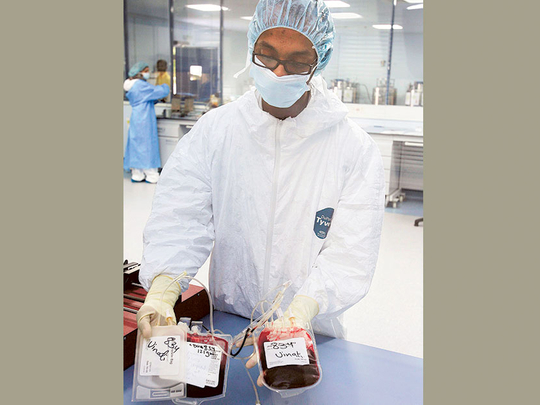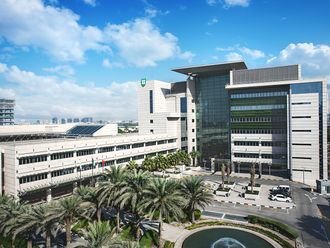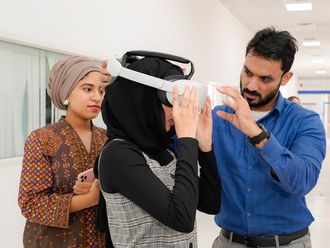
Dubai: The Dubai Cord Blood and Research Centre (DCRC) is calling upon mothers who can donate cord blood from their newborn’s placenta so that they could be of help to people with inherited blood disorders.
In the last nine years since its inception in 2006, so far, the Centre has acquired nearly 4,800 units of umbilical cord blood and they have the capacity to store three times as many units. The majority of these samples are for private donation. Both types of donations — private, for family use, and public, for the use of any needy person in the community — are stored for a period of 30 years. To promote public donation of cord blood, a continuous education campaign amid the public about the importance of cord blood harvesting is important, according to Dr Kareema Salim Al Arrayed, Head of DCRC.
Elaborating on the importance of stem cells, including cord blood stem cells, Dr Kareema said: “When an embryo is at its early stage of development at three to five days of fertilisation, it contains many stem cells. These are called totipotent or pluripotent cells. These cells can develop into all cell types.”
While embryonic cells that are available two to three days after the fertilisation of the egg have the capacity to grow into any kind of cell, it is not ethical to collect them.
That is why cord blood gains so much importance. It contains haematopoietic stem cells — that can develop into adult stem cells and can give rise to blood cellular components such as red and white blood cells and platelets.
Dr Kareema adds: “The other adult stem cells in the body can renew themselves and can differentiate to yield some or all of the major specialised cell types of the tissue or organ, but cannot grow a full subject.”
Cord blood cells are invaluable because they can cure inherited blood disorders. In simple terms, these haematopoietic stem cells are the building blocks of blood and the immune system and have the ability to repair damaged tissue, and also cure inherited blood disorders like thalassaemia or sickle cell anaemia.
Cord blood stem cells can help in the treatment of malignant blood disorders such as leukaemia, pre-leukaemia (myelodysplastic syndromes), and lymphomas. Cord blood stem cells can also help in the treatment of non-malignant blood diseases such as the inherited bone marrow failure syndromes, and inherited metabolic disorders among other conditions.
Recently, an Indian expatriate mother who had a child suffering from thalassaemia major gave birth to twins and stored the cord blood of her twins at DCRC. The blood type of the twins was an exact match for the first child who was successfully treated from the disease using cord blood. In the past, the Dubai Thalassaemia Society has reported nine cases where cord blood has been instrumental in curing the disease.
Embryonic stem cells offer hope for new therapies, but their use in research has been debated. As an alternative to the use of embryonic stem cells, Shinya Yamanaka, a Japanese scientist made a groundbreaking discovery in 2006 that would win him the Nobel Prize in Physiology and Medicine: he found a new way to ‘reprogramme’ adult, specialised cells to turn them into stem cells.
Reprogramming allows for turning any cell of the body into a pluripotent stem cells — these are called induced pluripotent stem cell (iPS). Scientists, for instance, have shown that it is possible to create insulin-producing cells from iPS cells; this has already been tested in a small number of patients in a Phase I clinical trial, with some positive results. Further research is needed to establish whether the technique can be developed into a safe and effective therapy. Stem cell therapy is promising, but it is a bit far from having it applied in routine medical practice. The different clinical applications of stem cell therapy are at the early stages of clinical trials.
The procedure
Explaining the registration procedure, Fatma Hussain Al Hashimi, head of the administration and education unit at DCRC, said: “This procedure is simple; the expectant mother needs to visit DCRC sufficiently in advance of her baby being due. Once a mother has agreed, we register her. If she has a condition in the family, we highly recommend her to preserve the stem cells for the use of her family or else we try to encourage the mothers to donate cord blood for public use.
“The family’s medical history questionnaire is conducted to check the suitability of the potential baby’s unit for storage. If the pregnant mother is potentially fit for storing her baby’s cord blood unit, the contract is signed and the fees are paid for private storage, whereas donation for the public bank is free. Cord blood is collected immediately after the baby’s birth. A sterile needle is inserted into the cord and the blood withdrawn into a special blood bag from the umbilical cord and the placenta, using the force of gravity.
“Cord blood can be preserved in liquid nitrogen at a temperature as low as -180˚ Celsius, for 30 years at least. The cord blood units are transported immediately from hospitals to DCRC through 24 hours active transport system and the units are processed within 24-48 hrs.”
Dr Kareema added: “At DCRC, we follow the international guidelines Fact [Foundation for Accreditation of Cellular Therapy] and AABB [American Association for Blood Banks] for collection, storage and maintenance of cord blood. The units are cryo-preserved for up to 30 years; although studies have proven that cryo-preserved stem cells remain viable indefinitely.”
Families who store cord blood for their personal use are charged Dh9,000, while it is free of charge for those who donate for public use or scientific research.












